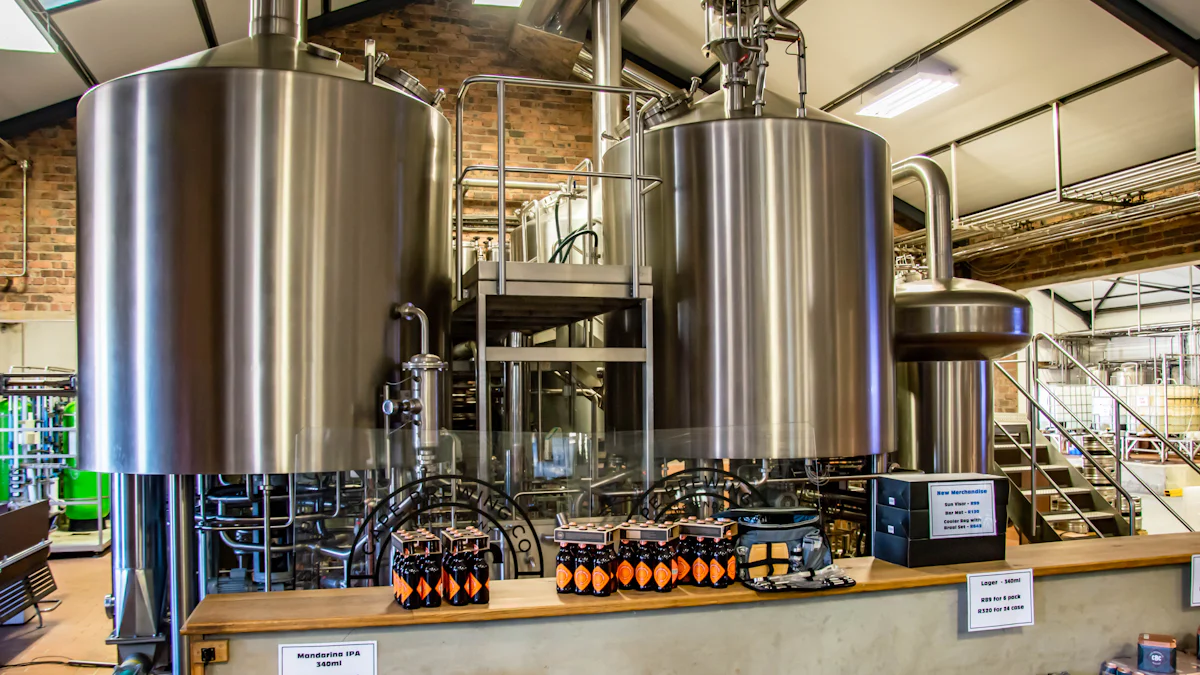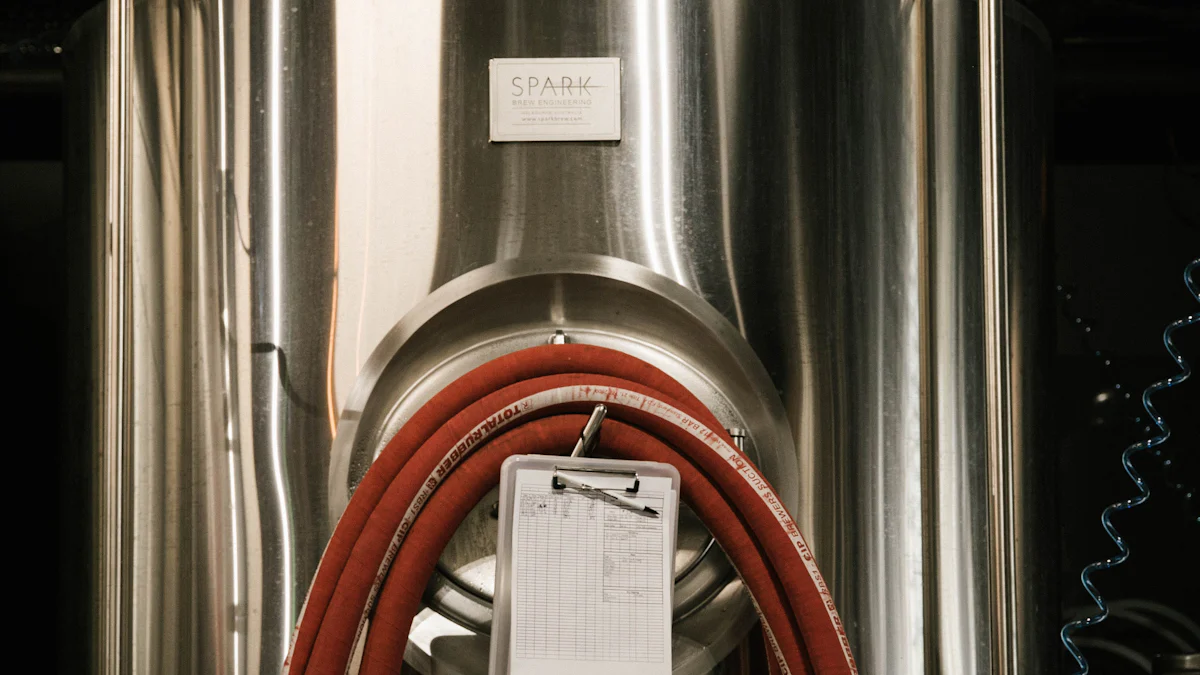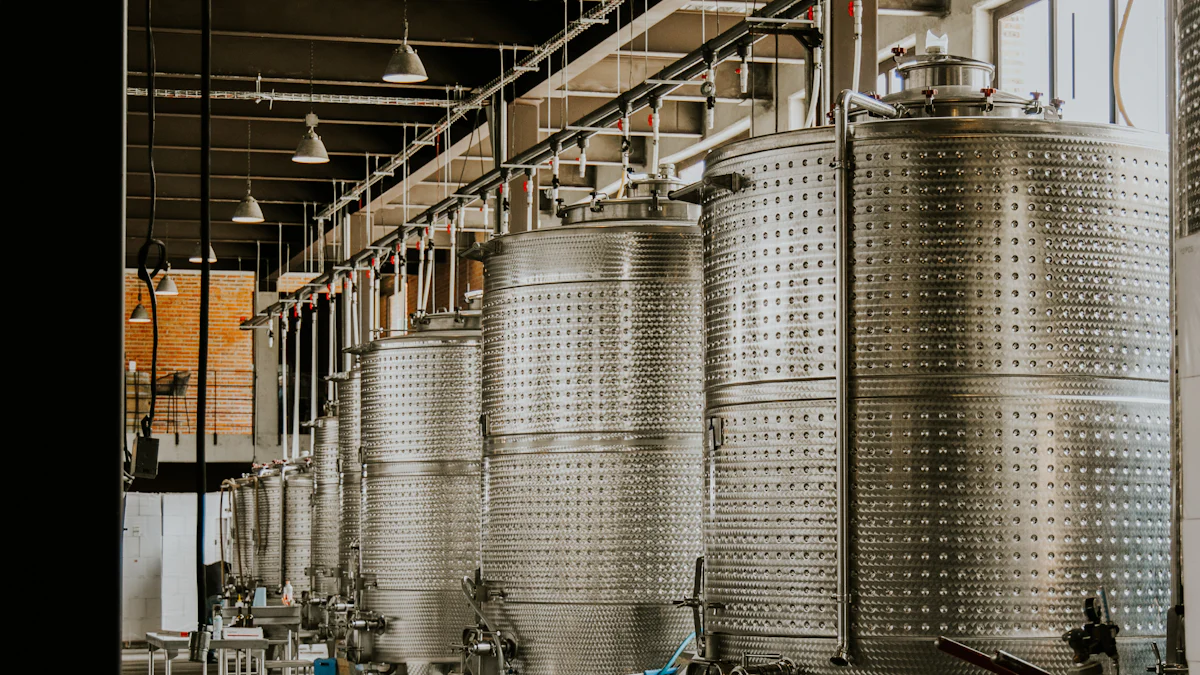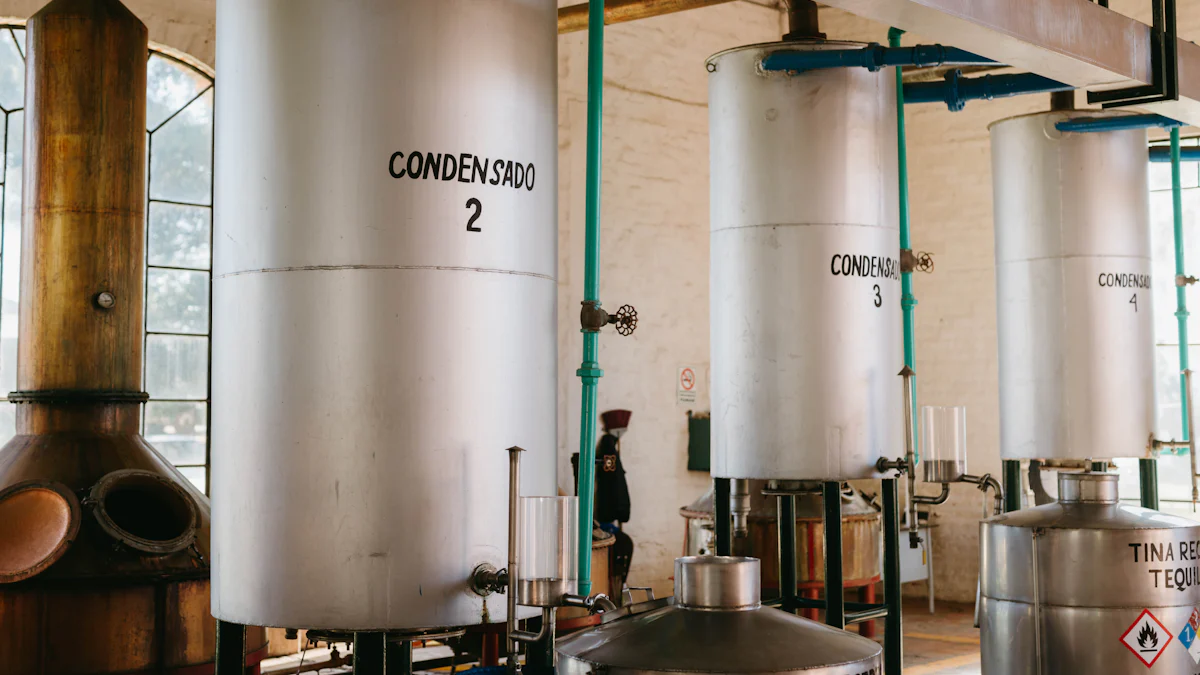
CIDER TANK
Cider Tank is a special container used for storage, fermentation or aging in the production process of cider commonly found in breweries or food processing industries. Common materials include stainless steel, glass and food-grade plastic. Stainless steel cider tanks are widely used because of their corrosion resistance and easy cleaning.
the services CHENMA provide
Customized Solutions
We manufacture a wide range of stainless steel tanks, focusing on the alcoholic (wine, beer, spirits), food and beverage industries. Our technical staff and experienced engineers can help customers find optimal solutions to their problems.
After-sales support
CHENMA is always ready to solve any after-sales problems.
During your initial production run, one of our experienced winemakers will come to your factory site to guide you step by step.
After-sales support
5-year warranty, if there is any problem with the wine tank or cider tank within these 5 years, we will solve it for you free of charge.
Technical Support
We provide follow-up technical support for all equipment, including on-site installation and assembly assistance, as well as consultation on the placement of related equipment. We provide lifetime support for all partners.
One-stop Customized Solution
Customize Top Head, Heating/Cooling for heating and cooling, and choose from a variety of leg and mounting options.Please contact us to learn more.
- Tank Capacity
- 10- to 20,000-Gallon Tanks
- Material
- Stainless Steel 304 316
- Head/Lid
- Open Top/1 Piece
- Manway
- 2/3 Pcs: Piano Hinge
- 2/3 Pcs: Sanitary Hinge
- Cone-Welded
- Dished-Welded
- Flat-Welded
- Tank Class
- Stationary / Transportable
- Working Position
- Horizontal / Vertical
- Tank Port Types
- Drain Port
- Fill Port
- Relief Valve
- Sensor Ports
- Sight Glass
- Tank Features
- None/Dimple/Conventional/Baffle Jacket
- Tank Features
- Double Wall
- Insulated
- Leak Detectors
- Level Indicating System
- Overflow Vents
- Manways
- Single Wall
- Temperature Sensors
- Top Access
- Vented
cider tank types
CHENMA provides a variety of cider tank solutions based on different functions, materials and designs. If you want to know more, please contact us!
cider tank with different functions
Cider fermentation tanks from CHENMA range in capacity from 3000l to 150hl. These 304/316L stainless steel fermentation tanks are appropriate for extremely corrosive conditions. They employ hygienic internal polishing and joints and seams that are 100% TIG welded. The tank has a huge rectangular door for convenient unloading, and its bottom is flat and inclined.


CHENMA offers stainless steel storage tanks from 5000l to 250hl. These storage tanks are made of AISI 304 high-quality stainless steel and can be upgraded to AISI 316L stainless steel. They are equipped with a CIP cleaning system and are suitable for commercial production or large-scale home brewing.
different designs of cider tank
How customers choose cider tanks of different designs mainly depends on the balance between flavor complexity and production controllability.
open top fermenter
Open top, usually with insect screen or lid.
Suitable for small batch or experimental brewing in craft wineries, trying natural fermentation or fruit flavor enhancement processes.
Low cost, suitable for small batch/experimental production, allows for flavor complexity.
High risk of contamination, unstable temperature control, low efficiency.
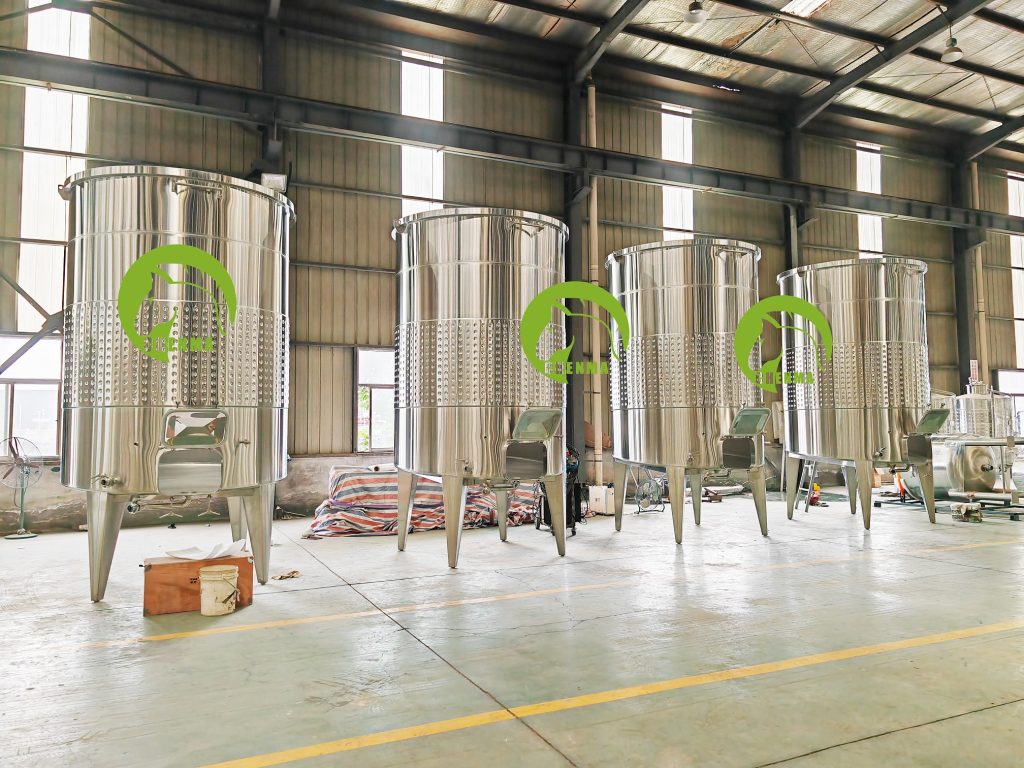

conical fermenter
Closed design, conical bottom, easy for yeast precipitation and separation.
Suitable for industrial winery, high hygiene standards, pursuit of efficiency and consistency, precise temperature control scenarios.
Precise temperature control, efficient yeast management, low hygiene risk, suitable for large-scale production.
High initial cost, small batches are not economical.
cider tank of different materials
Stainless steel cider tanks have become the first choice for modern industrial brewing due to their hygiene, durability, temperature control ability and flavor stability. Although oak barrels can impart special flavors and epoxy resin tanks are relatively low in cost, stainless steel tanks have significant comprehensive advantages in quality control, production efficiency and long-term economy, and are especially suitable for wineries that pursue standardized and large-scale production.
stainless steel cider tank
More hygienic and easy to clean
The surface is smooth and non-porous, not easy to breed bacteria or residual impurities, meets food-grade hygiene standards (such as HACCP, GMP), and supports high-pressure water gun or steam sterilization.
Corrosion resistance and long service life
Acid and alkali resistance, oxidation resistance, long-term contact with acidic liquor without corrosion, service life can reach decades.
Accurate temperature control and stability
Can be integrated with cooling jacket and electric temperature control system to accurately adjust fermentation and storage temperature to ensure flavor consistency.
Sealing and anti-oxidation
Fully enclosed design, can be filled with nitrogen or CO₂ protection to prevent oxidation and bacteria invasion.
Inert environment and flavor retention
Does not react chemically with the liquor, maintaining the original fruity aroma and pure taste of cider.
Long-term economic efficiency
The initial investment is high, but the maintenance cost is low, the life is long, and the long-term cost performance is significant.
other material cider tank-Oak barrels
Flavor addition
gives the wine complex flavors such as vanilla and smoke, suitable for high-end products that pursue unique flavors and hand-made brewing.
Traditional crafts
suitable for high-end hand-made brewing, enhancing product uniqueness and premium space.
High maintenance cost
requires regular cleaning and renovation, prone to mold or microbial growth. Small capacity (200-500 liters), low efficiency, difficult to scale.
Poor temperature control
dependent on ambient temperature, poor fermentation/storage stability.
other material cider tank-Epoxy resin tanks
Low cost
initial investment is lower than stainless steel tanks, suitable for small wineries with limited budgets.
Lightweight and easy to use
suitable for short-term storage or small batch production.
Poor durability
the inner wall coating is easy to peel off, leading to corrosion or pollution risks. Flavor interference: if the coating is damaged, it may release chemicals that affect the quality of the wine.
Limited temperature control
easily affected by external temperature fluctuations, insufficient stability.
cider tank Q&A
How much money do you need to start a cider brewery?
In addition to factors such as location, equipment, licenses, labor costs, and marketing, the size of the brewery also has a huge impact on investment costs, as follows:
Craft Brewery or Pilot Brewery:
The scale is 1 barrel to 5 barrels. The cost of opening a craft brewery or pilot brewery is between $40,000 and $80,000.
Small Brewery or Microbrewery:
The scale is 5 barrels to 15 barrels. The cost is between $80,000 and $150,000.
Large Brewery:
For breweries with a scale of more than 15 barrels, the cost of opening a large brewery may be much higher than that of a small brewery or microbrewery because the equipment and facilities required are more extensive and complex. The cost of opening a large brewery is more than $150,000.
What are some tips for buying a conical fermenter?
Food-grade stainless steel (304/316L) is preferred. When selecting the capacity, 20% space needs to be reserved (for example, 80 liters of wine in a 100L can) to prevent overflow during fermentation.
Purchasing well-known brands is a more reliable choice. CHENMA can provide customers with a comprehensive after-sales service system, including process design, equipment manufacturing, installation and commissioning, and assembly assistance. If you want to learn more, please contact us.
How to clean and disinfect a Cider Tank?
Cleaning and disinfection are the core links to ensure the quality of cider. Appropriate methods should be selected according to the material and scale of the tank. Industrial production recommends CIP system to improve efficiency.
1. Pre-rinse: 5 minutes of cold water rinse.
2. Alkaline wash: 1-2% NaOH solution, 75-80°C circulation for 15 minutes.
3. Intermediate rinse: deionized water rinse to neutral pH.
4. Acid wash: 1% nitric acid solution circulation for 10 minutes (neutralize alkali residue and remove scale).
5. Final disinfection: 0.1% PAA or hot water disinfection.
6.Environmental protection treatment: The waste liquid is neutralized to pH 6-9 before discharge, complying with local environmental regulations.
How to maintain cider tank?
1. Daily maintenance
Cleaning and disinfection
After each use: clean the wine can thoroughly, check and clean the valves and pipe interfaces;
Disinfection frequency: disinfection must be performed before each batch is used to avoid cross contamination.
Sealing inspection
Sealing ring/gasket: check whether the silicone/rubber sealing ring is aging or cracking once a month, and apply food-grade grease regularly to extend the service life;
Valves and interfaces: apply soapy water after pressurization to observe bubbles to test air tightness.
Environmental control
Humidity: keep the storage environment dry (humidity <60%);
Temperature: the recommended storage temperature for empty cans is 10–25°C to avoid extreme cold and heat causing material deformation.
2. Regular deep maintenance
Weld inspection: check the inner wall weld for corrosion or cracks every quarter (especially 316L material);
Polishing maintenance: mechanical/chemical polishing once a year to restore surface finish
Cooling system maintenance: flush the scale in the glycol jacket with 5% citric acid, check the circulating pump lubricating oil, and replace it in time.
3. Long-term out-of-service maintenance
Emptying and drying: After thorough cleaning, use sterile compressed air to blow out the moisture in the tank.
Protective measures: The outer wall of the stainless steel tank is coated with anti-rust oil, and all valves and interfaces are sealed with plastic wrap to prevent dust.
4. Safety operation specifications
Avoid overpressure/vacuum: Install a pressure relief valve during fermentation to prevent excessive pressure in the tank (especially during pressure fermentation in a conical tank).
Chemical management: Strong acid/alkaline cleaners must be stored separately, and protective equipment must be worn during operation.
Electrical safety: The temperature control system is grounded to avoid leakage in a humid environment.

